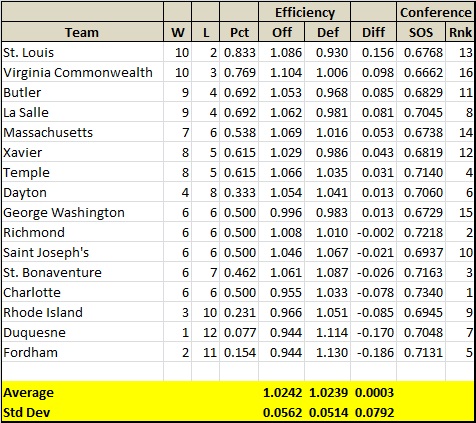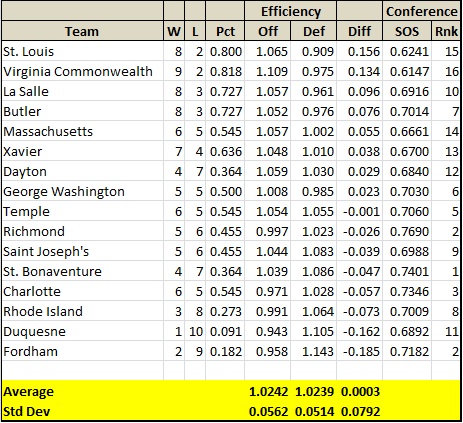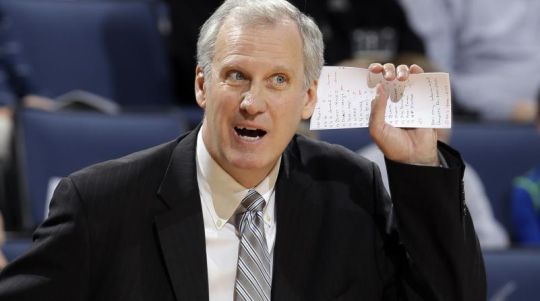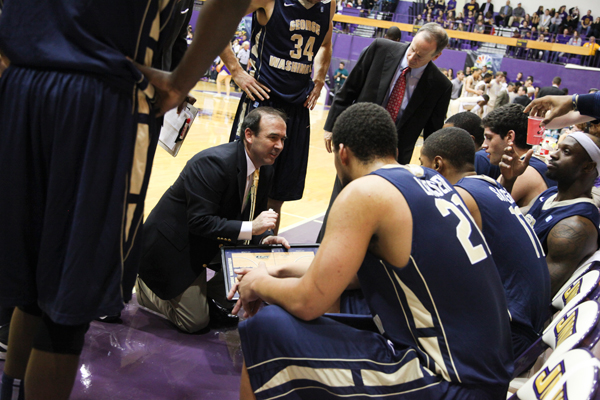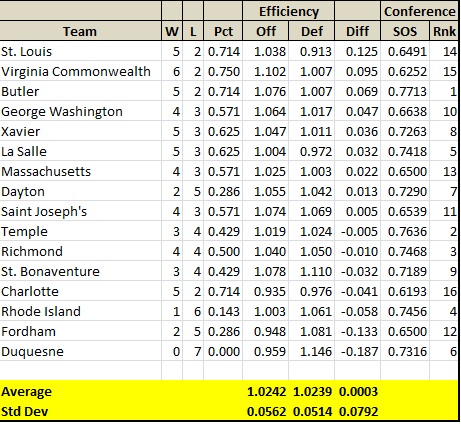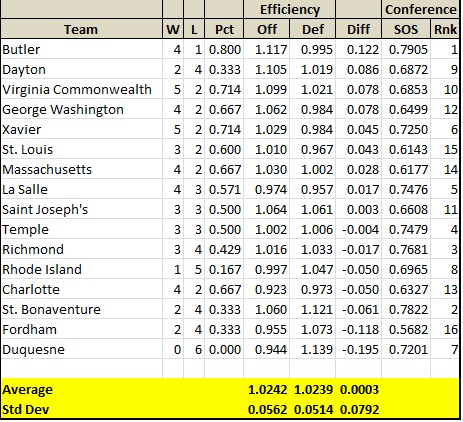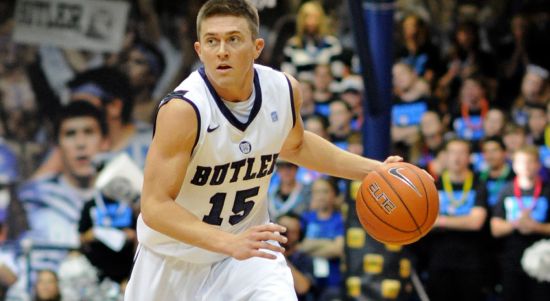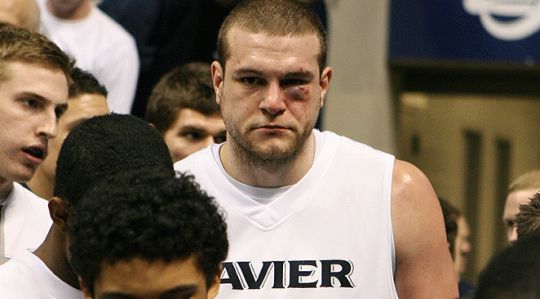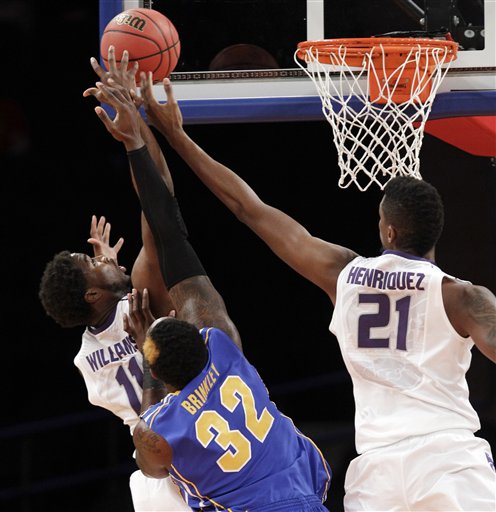CIO… the Atlantic 10 Conference
Posted by Brian Goodman on February 28th, 2013Joe Dzuback is the RTC correspondent for the Atlantic 10. You can also find his musings online at Villanova by the Numbers or follow him on Twitter @vtbnblog.
(ed. note – this week’s column does not factor in Wednesday night’s action, which saw Saint Louis beat Saint Joseph’s, Richmond defeat George Washington and Dayton top Charlotte.)
Looking Back
- Saint Louis Breaks Out – The Billikens evicted Butler and Virginia Commonwealth and decisively took sole possession of the conference penthouse last week. On Tuesday Saint Louis hosted Virginia Commonwealth, the team that paced the conference from virtually the opening week and ranked #24 by the AP the previous Monday. The Bills pummeled the Rams by 14, 76-62, handing coach Shaka Smart’s squad the worst defeat of their season. With barely 48 hours to celebrate, the Billikens packed their bags and traveled to Hinkle Fieldhouse to play #15 ranked Butler on Friday night. Saint Louis held on to defeat the Bulldogs by 4, 65-61, and hand Butler only their second defeat at home this season. At 10-2, SLU sits atop the conference with a half-game lead (one fewer loss) over second place Virginia Commonwealth.
- Conference Difference Margins, Week 8 – The difference margin continues to divide the conference roughly in half; nine teams have positive margins, seven teams have negative margins. The paradox is that the Atlantic 10, much like many conferences in parity, the number of teams with a 0.500 record or better numbers 11 (or 69% of the conference membership). For a power conference this parity (if the top of the conference was strong enough) could, in effect, “pull” a middling team or two into the NCAA tournament. Is the A-10 strength of schedule enough to yield a fifth or sixth bid?
Reviewing the numbers (from Ken Pomeroy’s kenpom.com site – the conference results through Monday February 25) gives us a few things to consider:
- The difference margin adds greater definition to Saint Louis’ breakout last week. At +0.156, the margin is half again larger than that of their nearest rival (Virginia Commonwealth). To this point Saint Louis is in a class by itself. A rocky out of conference run will most likely keep the Bills’ NCAA seed in the #4 to #6 range, probably deceptively low.
- The teams are forming a series of well-defined tiers, many of which are consistent with the conference records earned so far. Note the Virginia Commonwealth/Butler grouping, distinct from the Massachusetts/Xavier/Temple tier.
- Duquesne and (yet again, unfortunately) Fordham have “lost touch” with the rest of the conference. The difference margins for the two lowest ranked teams suggest they are no longer competitive with their 14 conference mates. Temple’s loss to Duquesne on February 14 becomes all the more puzzling and damaging to the Owls’ post season prospects.
- Charlotte’s record says “even”, but the difference margin suggests the 49ers have been susceptible to blowouts. A look at the schedule reveals a tendency to lose big on the road Miami, Richmond, Saint Louis). Not the kind of credential one wants to present to the Selection Committee.
- Dayton maintains a positive difference margin (+0.013) widely at variance with their losing record (4-8). A Pythagorean Winning Percentage calculation suggest the Flyers should be closer to a 0.500 record (or 6-6, since they have played 12 games). They are, however, so far underwater that it is likely the Flyers will “run out of games” before they can get to a 0.500 record (8-8 given their 16 game conference schedule).
Reader’s Take





























